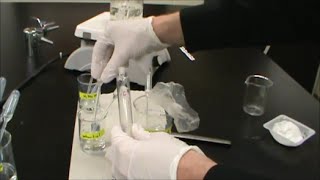Parenting(Age 5 to 8) | Academic | General | Parenting(Age 9 to 12) | Parenting(Age 13 to 16) | 2 year AGO
A Study of Esterification

Esterification is the reaction in which an alcohol (ROH) is mixed with an organic acid (RCOOH) to form an ester (RCOOR) and a by - product together with it which is water. It is a chemical reaction during which there is a formation of ester during the reaction. Or we can say that, formation of at least one ester product resulting from the chemical reaction. Esters are derived from carboxylic acid so the organic acid we are talking about is carboxylic acid. Esters also can be formed either by the reaction of acid anhydride or acid halides with alcohols or by the reaction of carboxylic acid salts with the alkyl halides.
In esterification reaction, carboxylic acid is heated with alcohol within the presence of an acid catalyst, and this ester formation happens. The catalyst used, in esterification reaction is concentrated sulphuric acid.
CH3COOH + CH3CH2COOH → CH3COOCH2CH3
The reaction between the carboxylic acid and alcohol is known as the Fischer esterification. And Fischer esterification, is one among the foremost important reactions of carboxylic acids. The majority carboxylic acids are suitable for the esterification reaction, but the alcohol used in the esterification reaction should generally be either a primary or secondary alkyl. Tertiary alcohols are not used in this reaction.
When the main two reactants which is carboxylic acid and an alcohol are mixed together, no reaction takes place, because there these two cannot react together without the presence of a catalyst. Upon the addition of catalytic amounts of an acid, the two components combine in an equilibrium process to give an ester and a water molecule.
Esterification reaction mechanism:
The five steps of reactions are:
Step 1: Formation of cation: This is the first step of esterification reaction, within which the acetic acid takes a proton (a hydrogen ion) from the sulphuric acid (concentrated). This hydrogen ion attaches to at least one of the one pair of the oxygen which is double-bonded to the carbon.
Step 2: Delocalized carbocation: The carboxyl oxygen gets protonated which causes delocalized carbocation further making the carbocation a stronger electrophile.
Step 3: Proton transfer: In this step the proton is transferred to at least one of the hydroxyl groups.
Step 4: Pi Bond Formation: The hydroxy group’s alcohol oxygen atom donates electron pair to a carbon atom which makes a π bond by eliminating a water molecule.
Step 5: Ester formation: This is the last and the final step. And as, the name suggests, there is ester formation in this step.
Now there are three ways that esterification reaction can take place, these are:
- From acid anhydride and alcohol
- From acid chloride and alcohol
- From carboxylic acid and alcohol
Properties of ester:
- Esters have a pleasant smell.
- They are used in the perfume and food industries.
- These are the organic compounds which are found in oils and fats.
Uses of Esters:
- Esters are used in perfumes, food flavorings, and in cosmetics.
- Esters are used as an organic solvent in chemistry solvents.
- Esters are used in the manufacturing of detergents and soaps.
- Phospho-ester bond is the backbone of the DNA molecules.
Want access to expert academic guidance — for free? When you create your free Vnaya account, you will have an option to ask a Question, Book a Demo session, talk to our Academic Experts, and get Professional Parenting Support —all for Free! Our Academic Counselor will help you learn how to improve your academic performance by assessing your learning style and curating a personalized lesson plan for you!
Sign up for your Vnaya account today to get a boost on your academic quest.















Post a Comment: